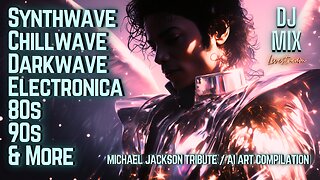Premium Only Content

What Is ASMR?
What Is ASMR?
Exploring the Phenomenon of Autonomous Sensory Meridian Response
In the vast landscape of internet culture, a phenomenon known as ASMR has emerged as a peculiar yet widely popular trend. ASMR, which stands for Autonomous Sensory Meridian Response, is a sensory experience characterized by a pleasurable tingling sensation that typically begins on the scalp and moves down the back of the neck and upper spine. This sensation is often triggered by specific auditory or visual stimuli. Let’s delve into the world of ASMR, exploring its origins, triggers, benefits, and its growing community.
Origins of ASMR
The term "ASMR" was coined in 2010, but the phenomenon itself had been experienced by many long before it had a name. The credit for popularizing ASMR goes to online communities, particularly YouTube, where individuals began creating videos designed to evoke this sensation in viewers. These videos often feature a variety of triggers, which we will discuss shortly, and are presented in a calm, deliberate manner.
Common Triggers
ASMR triggers are diverse and can vary greatly from person to person. Some of the most common triggers include:
Whispering: Soft, gentle whispers, often characterized by a soothing tone and close proximity to a microphone.
Tapping and Scratching: Repetitive sounds of tapping fingers or scratching nails on various surfaces, such as wood, glass, or fabric.
Role-Playing: ASMR artists often take on roles, such as a hairdresser, doctor, or librarian, and simulate personal attention or care.
Personal Attention: This can include actions like simulated hair brushing, applying makeup, or giving a massage.
Nature Sounds: Relaxing sounds from nature, such as rain, rustling leaves, or ocean waves.
Eating Sounds: Some individuals find the sounds of eating, known as "mukbang," to be triggering.
Visual Triggers: Certain visual stimuli, like watching someone perform a task with precision and care, can induce ASMR.
Benefits of ASMR
While scientific research on ASMR is still in its early stages, there is a growing body of evidence suggesting potential benefits. Many individuals report that engaging with ASMR content helps them to:
Relieve Stress and Anxiety: The calming nature of ASMR videos can lead to reduced stress levels and a sense of relaxation.
Improve Sleep Quality: Watching ASMR content before bed may help individuals fall asleep faster and experience deeper, more restful sleep.
Enhance Focus and Concentration: Some find that ASMR aids in improving focus, making it a useful tool for studying or work.
Alleviate Symptoms of Insomnia: ASMR has been used as a complementary technique for individuals struggling with insomnia.
Provide a Sense of Connection: For some, the personalized attention in ASMR videos fosters feelings of companionship and comfort.
The ASMR Community
ASMR has garnered a devoted and diverse community. ASMR creators, often referred to as ASMRtists, produce a wide range of content to cater to different preferences. The community encourages positivity, inclusivity, and creativity. Additionally, conventions and meet-ups have emerged, allowing enthusiasts to connect in person.
In Conclusion
ASMR, the sensory phenomenon that brings about a pleasurable tingling sensation, has become a significant aspect of internet culture. While research on its benefits is ongoing, the experiences and testimonials of its community attest to its potential as a tool for relaxation, stress relief, and improved well-being. For those intrigued by this unique sensation, exploring the vast world of ASMR content offers a delightful journey into the soothing realm of sensory experiences.
-
 2:03:51
2:03:51
TimcastIRL
3 hours agoTrans Minneapolis Shooter BLAMED Massacre On Mom & Gender Transition | Timcast IRL
140K159 -

Man in America
10 hours agoIT DOESN'T ADD UP: The Trans Shooter's Story Is FULL of Holes
7.96K18 -
 LIVE
LIVE
StevieTLIVE
3 hours agoFriday Night Warzone HYPE
245 watching -
 LIVE
LIVE
SynthTrax & DJ Cheezus Livestreams
1 day agoFriday Night Synthwave 80s 90s Electronica and more DJ MIX Livestream Michael Jackson / AI Art Compilation Edition
218 watching -
 1:03:57
1:03:57
Sarah Westall
3 hours agoMara Lago Accord Joins the Fed, Fed Waves the White Flag & more w/ Andy Schectman
4.83K -
 LIVE
LIVE
I_Came_With_Fire_Podcast
1 day ago*BREAKING* Special Guest Katarina Szulc
218 watching -
 LIVE
LIVE
megimu32
3 hours agoOFF THE SUBJECT: FAFO Friday! Bodycams & Mario Kart Mayhem!
93 watching -
 55:36
55:36
Flyover Conservatives
22 hours ago4 Strategies to Create Opportunity from Nothing - Clay Clark | FOC Show
12.3K -
 1:49
1:49
Gaming on Rumble
9 hours agoWhat is the Rumble Creator Program!?!? (Active Premium Creators) | Lvl UP
18.4K2 -

Midnight In The Mountains
6 hours agoGaming w/ PER·SE·VER·ANCE | Midnights Play Fortnite | Split Screen Action!
11.3K2